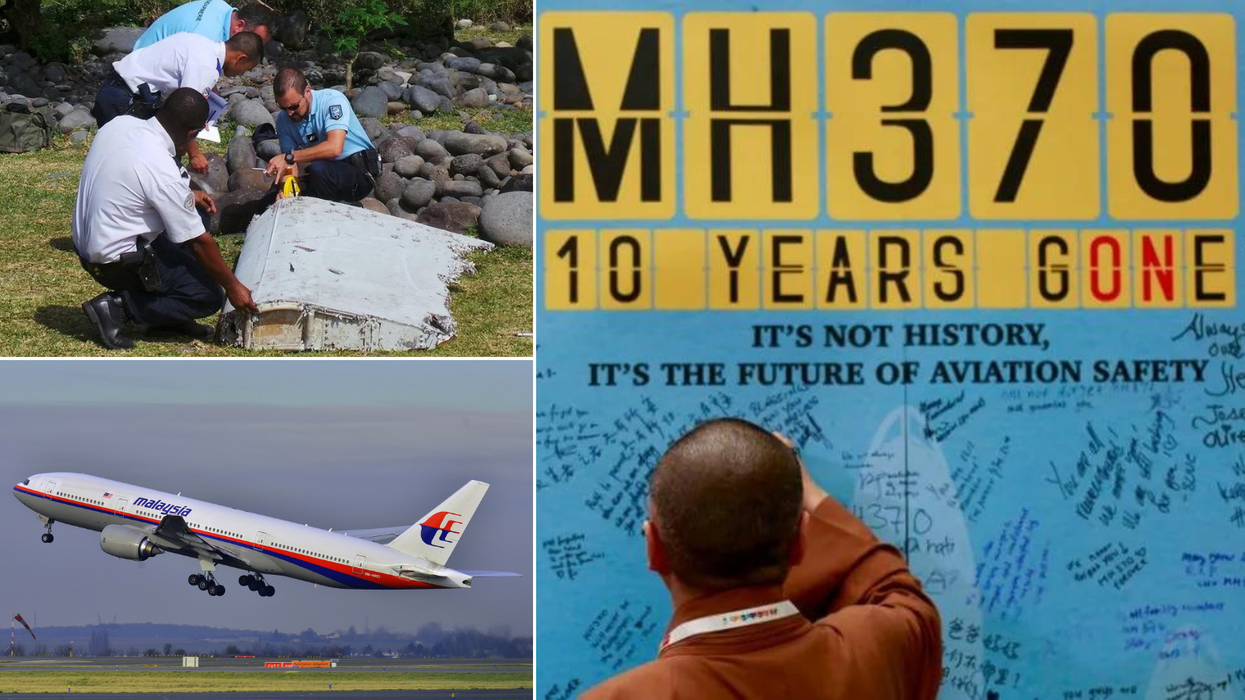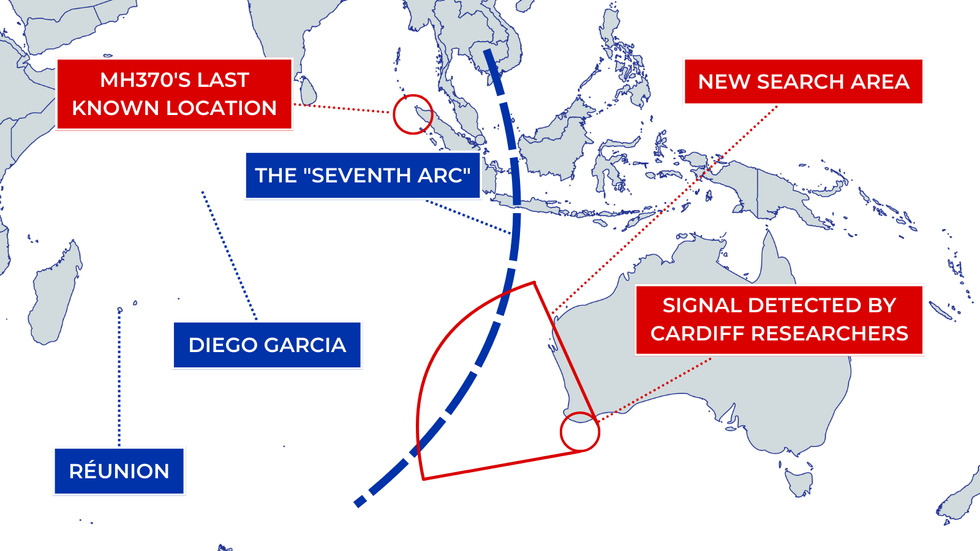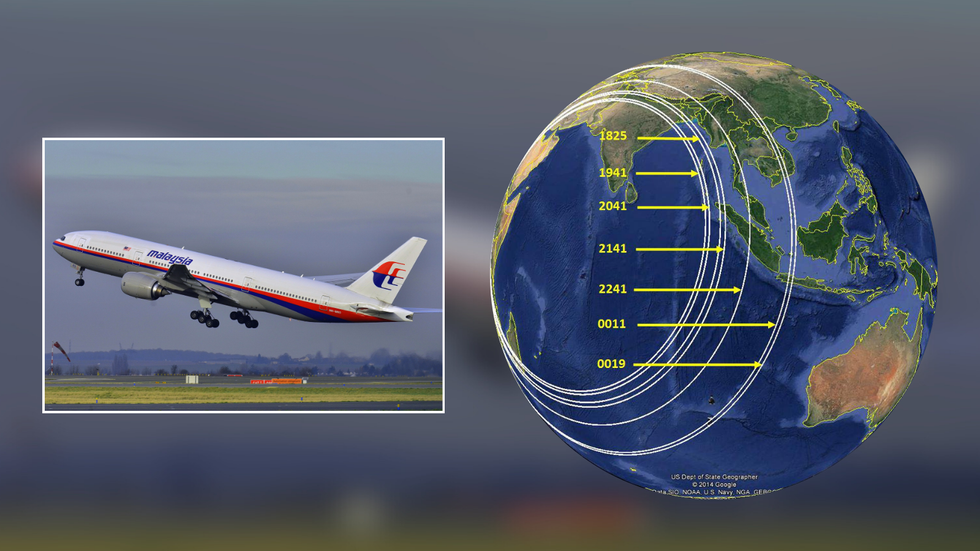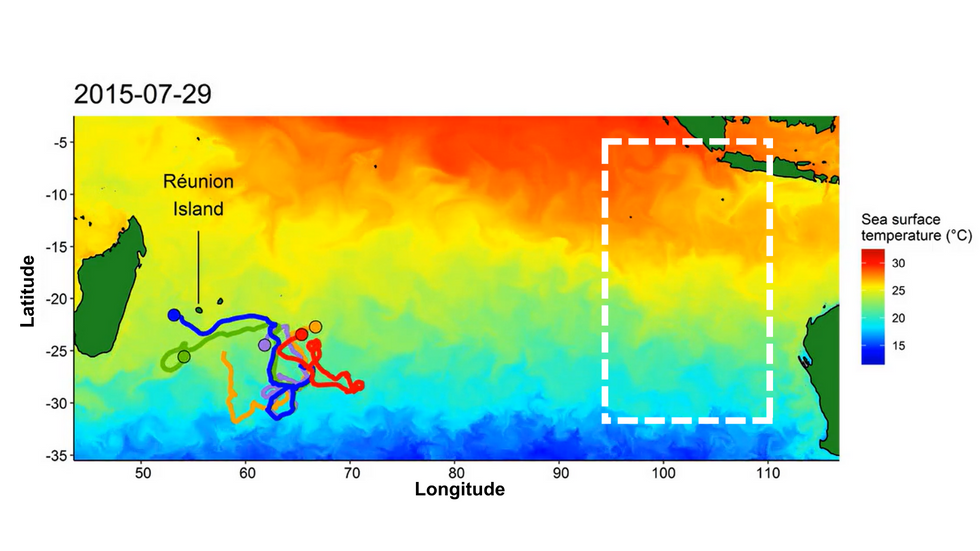MH370: Map pinpoints location that could lead to breakthrough in hunt for missing Malaysian Airlines plane

It has been more than 10 years since its disappearance - but researchers are still grappling with finding MH370 | Reuters/Wikimedia Commons

Researchers unearthed data from underwater microphones which had picked up a signal recorded at MH370's estimated crash time - which could narrow down the search area to just a fraction of its original size
Don't Miss
Most Read
The search area for pieces of the missing Malaysia Airlines Flight 370 (MH370) drastically narrowed down thanks to new research by a UK-based team of scientists has been mapped out for the first time in what could be a breakthrough moment for finding the stricken aircraft.
The flight - carrying 239 people - had disappeared after taking off from Kuala Lumpur on March 8, 2014, and despite huge multinational search efforts, its main fuselage has never been located.
But researchers from Cardiff University have discovered a signal which could help identify the resting place of the Boeing 777 - and now, new maps have shown just where any potential wreckage may lie.
The team at Cardiff unearthed data from underwater microphones which had picked up a six-second signal recorded at the moment MH370 is thought to have crashed into the Indian Ocean over 10 years ago.

The Cardiff team's research uncovered a segment of the "seventh arc" in which they think the plane could have crashed
|GB News
While earlier search efforts had focused on the "seventh arc" - a line 1,200km off the Australian coast denoting the furthest point investigators think the plane could have crash-landed - the Cardiff team's research could hone any search area down by a significant margin.
The arcs were created by measuring the time it took for signals to travel between the plane and satellites from British telecoms firm Inmarsat - in theory, the plane could have been at any point along one of them when a signal was received.
By triangulating these signals with other known data about the plane, investigators have since estimated it went down along a stretch of the seventh arc.
But the six-second sound - consistent with a 200-ton aircraft crashing into the ocean - picked up by a microphone at a hydroacoustic station Cape Leeuwin in Western Australia effectively narrows down the search area to a fraction of the original arc.
MORE ON MH370:
- MH370 mystery could finally be solved after six-second sound signal detected by underwater microphones
- MH370: Simon Calder says 'extraordinary piece of research' could finally solve mystery
- MH370: Bombshell new data exposes two MAJOR revelations as mystery of missing Malaysian Airlines plane begins to become clear

Satellite imagery shows the seven "arcs" - bands of locations from which MH370 could have been transmitting when it vanished
|COMPASS/Wikimedia Commons
However, another hydroacoustic station in the British Indian Ocean territory of Diego Garcia didn't pick up the signal - prompting worries from one of the Cardiff researchers.
Dr Usama Kadri, a reader of applied mathematics, told The Telegraph: "This raises questions about its origin.
"Given the sensitivity of hydrophones [the underwater microphones], it’s highly unlikely a large aircraft impacting the ocean surface wouldn’t leave a detectable pressure signature, particularly on nearby hydrophones."
Kadri said his team would need to conduct further research with an exercise involving explosions or airguns to cross-reference signals from those with sounds picked up by hydrophones.

Researchers used the barnacles to track approximate debris drift paths in the Indian Ocean
|University of South Florida
He added: "If the signals from such explosions showed pressure amplitudes similar to the signal of interest, it would support focusing future searches on that signal.
"If the signals detected at both Cape Leeuwin and Diego Garcia are much stronger than the signal in question, it would require further analysis of the signals from both stations."
Dr Kadri and the Cardiff investigators' research also adds to studies carried out by a team at Kuwait University, which collected biological data from barnacles clinging to a part of the plane's wing which had washed up on the shores of the France-administered island of Réunion in July 2015.
The Kuwait researchers work out that the part spent its "last several months" within 1,500km of Réunion, hundreds of miles from the MH370 search area - but the bio-data means investigators can effectively track debris to an estimated crash site.










